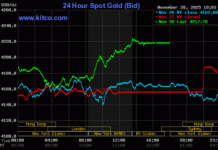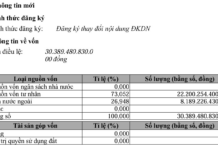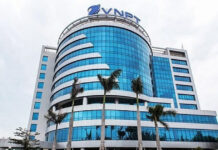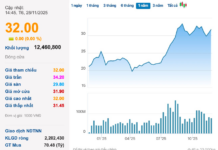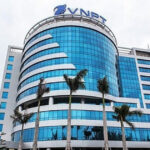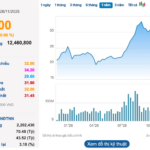Expanding Gap
As of June 24, 2024, the capital mobilization of credit institutions (CIs) increased by 1.5% compared to the end of 2023, much lower than the economic credit growth rate of 4.45%. In absolute terms, CI customer deposits are estimated to have increased by just over VND 200 trillion, while credit balance increased by more than VND 600 trillion – three times the increase in deposits.
Looking back at the end of the first quarter of 2024, deposit balances decreased by more than VND 71 trillion, while credit balances increased by more than VND 192 trillion, with a gap of only VND 263 trillion. By the end of the second quarter of 2024, the gap between these two variables widened to VND 400 trillion.
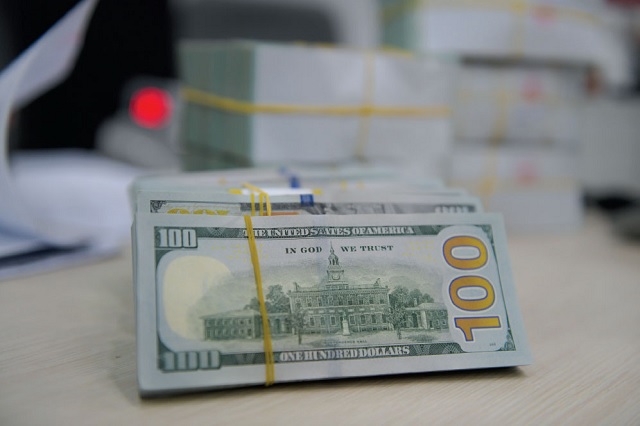
As of June 25, the SBV has sold about USD 5.5 billion to intervene in exchange rates since the end of April. Photo: LE VU
|
To reduce the impact of seasonality, we can compare it with the same period last year. Accordingly, the gap existed before, but it was not too large, as capital mobilization in the first six months of 2023 increased by 3.68%, slightly lower than the credit growth rate of 3.83%.
There are several reasons that can explain this widening gap.
First, regarding the slow growth of capital mobilization, it is probably due to the impact of monetary aggregates being tightly controlled again, after a sudden increase in the last month of 2023. Although recent reports from the General Statistics Office no longer announce the monetary aggregate indicator, based on the latest updated data of the State Bank of Vietnam (SBV) up to March 2023, M2 money supply increased slightly by 0.09%.
Especially in the second quarter of 2024, the money supply was under pressure to narrow due to the SBV’s intervention to stabilize the foreign exchange market by selling US dollars and gold. According to updated information as of June 25, the SBV has sold about USD 5.5 billion to intervene in exchange rates since the end of April, and this number may continue to increase. Meanwhile, after selling gold through auction, the amount of stabilizing gold to be sold next through four state-owned commercial banks is still unknown.
In the bill and open market operation (OMO) market, the regulator also net withdrew strongly with a total value of nearly VND 101 trillion in June last month. With inflationary pressures still lurking, controlling the money supply seems to be a priority choice. The consumer price index has remained above the 4.3% mark for three consecutive months in the second quarter. Political instability is driving up global maritime freight rates, coupled with the high USD/VND exchange rate, making it necessary to be cautious about inflation in the coming time.
On the other hand, credit growth, although the results have not met expectations in the first half of this year, is still enough to triple the growth rate of capital mobilization. Or, to put it another way, with weak input capital growth, banks also find it difficult to boost credit. However, compared to the same period last year, credit is still recording a growth rate of nearly 13.5%, also much higher than the deposit growth rate of nearly 9.8%. The outstanding credit growth results in the fourth quarter of 2023, in general, and especially in the last month of 2023, have contributed significantly to the above credit growth.
Inevitable consequence
With the gap between capital mobilization and credit widening, the first consequence that can be seen is the upward trend of interest rates again.
Since the beginning of the second quarter, banks have continuously adjusted deposit interest rates higher, making the capital mobilization front fierce again. Compared to the end of the first quarter, the average interest rate offered by banks increased by 0.3 percentage points for terms of 1-5 months; increased by nearly 0.4 percentage points for terms of 6-12 months and increased by 0.25 percentage points for terms of 13 months or more.
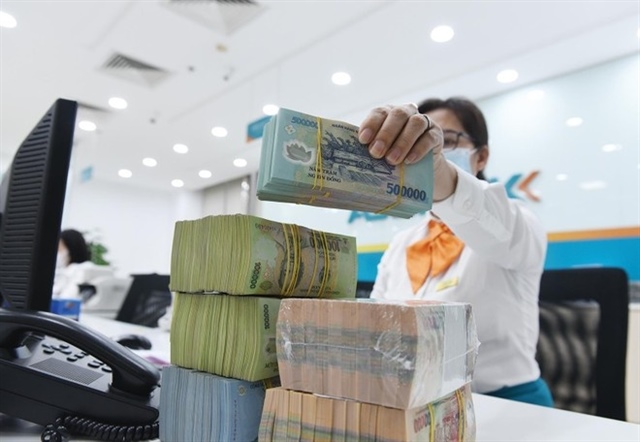
Inflation and exchange rate risks force the regulator to control the money supply more cautiously. Photo illustration: DNCC |
Not only in the primary market (with residents and economic organizations), but interest rates in the secondary market (interbank) are also maintained at a high level, while the bill auction interest rate and the OMO interest rate are also continuously raised by the regulator. After increasing the bill issuance interest rate by 0.1 percentage points to 4%/year, increasing the OMO interest rate by 0.25 percentage points to 4.5%/year on May 22; just a day later, the regulator continued to increase the bill interest rate by 0.2 percentage points to 4.2%/year. On June 25, it was raised again to 4.3%/year; on June 28, it was raised again to 4.5%/year. From 1.4%/year at the time when the SBV started issuing bills again on March 11, the bill interest rate has increased by 3.1 percentage points so far.
It can be seen that the high OMO interest rate has pushed up the borrowing interest rate in the secondary market, and this trend will inevitably push up the deposit interest rate in the primary market. Meanwhile, analysts believe that the SBV’s recent move to shorten the term and increase the winning bill interest rate is to raise the interbank interest rate in the context of exchange rate pressure still exists.
The second consequence is that the sluggish growth of input capital mobilization will make it difficult for banks to boost output credit, due to safe ratios. The loan balance-to-deposit ratio of the group of state-owned commercial banks and joint-stock commercial banks updated to April 30, 2024, was both above 82%, close to the maximum prescribed limit of 85%. Accordingly, there is not much room left for additional lending.
In addition, the ratio of short-term capital used for medium and long-term loans of the whole system at the end of April was more than 28%, also close to the prescribed limit of 30%. Notably, while this ratio in the group of state-owned commercial banks was only 23.6%, the group of joint-stock commercial banks is still at a high level of over 40%. This requires banks that violate this ratio to strengthen medium and long-term capital mobilization before thinking about lending.
In the context of a more optimistic economic outlook, reflected in the second-quarter GDP growth figures and positive business recovery indicators, along with banks being allowed to continue restructuring debts for customers until the end of this year, credit demand is expected to be stronger in the second half of this year.
However, inflation and exchange rate risks force the regulator to control the money supply more cautiously, limiting the input capital of the banking system and affecting lending activities.
In case they still promote lending and widen the gap between capital mobilization and credit growth, banks will hardly be able to avoid having to accept to continue increasing input interest rates and witnessing the output-input interest rate margin narrowing. In the context of bad debts still tending to increase, this choice becomes even more difficult.
Thuy Le
Which bank offers the highest interest rate for online savings in early February 2024?
Beginning February 1st, 2024, several banks have been adjusting their interest rates downwards for savings accounts ranging from 1 to 24 months. Based on a survey conducted across 16 banks, the highest annual interest rate for online savings deposits at a 6-month term is 5%, while for a 12-month term, it is 5.35%.
4 Factors Putting Pressure on USD/VND Exchange Rate in Q1/2024
With the currency exchange rate fluctuating in the first few weeks of 2024, Mr. Ngo Dang Khoa, Director of Foreign Exchange, Capital Markets and Securities Services at HSBC Vietnam, highlights four factors putting pressure on the USD/VND exchange rate in Q1/2024…
Banks Sacrificing Profits to Support the Economy
In 2023, the question “which bank has the lowest interest rates?” is being talked about more than ever. With the prevailing difficult economic situation affecting individuals and businesses, in line with the directive of the State Bank of Vietnam (SBV), banks have unanimously sacrificed their profits by reducing lending rates and introducing credit packages with interest rates as low as 0%.






